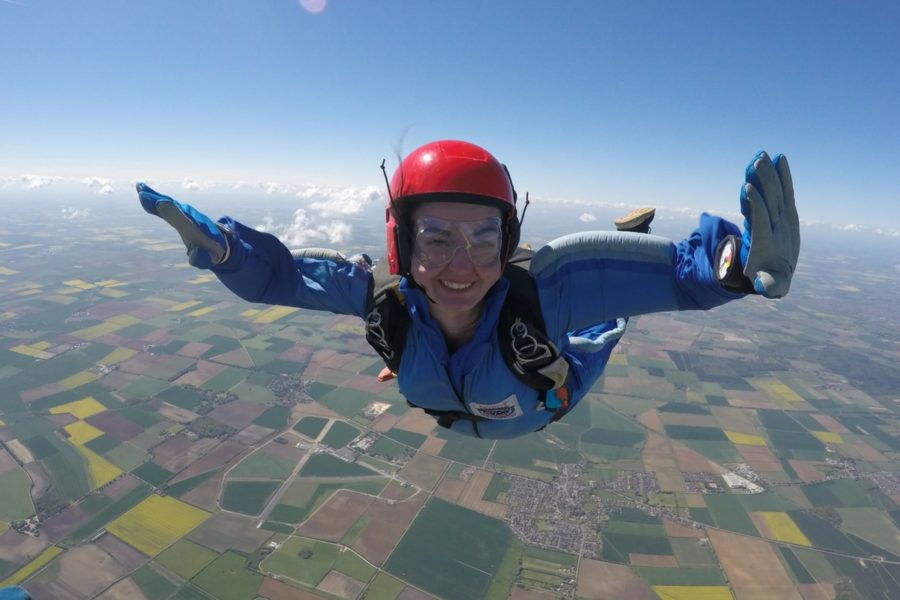


This is something that you will do at the end of each jump. After getting stable, you will work on tracking. This time you get to put into practice everything you already know and complete a stable solo exit.

Up until now you have had an instructor holding on to you during exit, helping you get stable. After the jump, you and the instructor will sit down and review the jump so the instructor can provide some pointers. Open at the right altitude and then complete a safe landing pattern. You will start your 360's to one direction, and then go back the other way, working on overall body position and getting control out of these turns. AFF Level 5: Big TurnsĪfter we have completed 90 degree turns, it's time to make big turns. Your instructor will conduct a debrief after the jump and give you hints to help you improve.
#FREEFALL SKYDIVE HOW TO#
You will still be wearing the radio, but hopefully you will be able to complete a pattern and start getting a feeling of how to flare now. First you will start with 90-degree turns in both directions and possibly go to bigger turns. This will be the time to start and stop turns, while not having an instructor holding on to you. Deploy your parachute and have the radio to help you prefect those canopy skills. All you need to do is try and not turn and if you start to turn, stop. Your instructors will let go of you during this jump, but will always be close by. Now that you know how to start and stop a turn, it's time for you to try it all on your own. You will deploy your parachute yourself at 5500 ft., then have the radio to help you refine your landing pattern and safely land for AFF Level 3. You will also initiate a left and right turn and also try a little forward movement out, all while having your two instructors at your side. You will still practice deploying your parachute and be expected to respond to hand signals from your instructors. Just like your first jump you will have two instructors. Congratulations - you are a skydiver! AFF Level 2: Start to Turn Assuming they are happy with your progress you will then be briefed for AFF Level 2. Your instructors will review the skydive with you, providing constructive feedback. You will be required to respond to hand signals to adjust your body position check your altimeter and practice deploying your parachute before deploying it for real! You will be talked down from the ground under your parachute by one of our instructors using radio equipment. or more and 2 instructors will hold on to you. Your first jump will typically be from 12,000 ft. After you have practiced it, then it is time to do it for real. Then you will experience the practical side of things with some free-fall body position training and a harness training to simulate time under the canopy. Also, you will be introduced to different types of malfunctions and how to address those issues. During these classes you will be walked through the equipment in great detail. A Certified Skydive Instructor teaches these basics in about 6-8 hours of classroom and practical application training. Ground Courseīefore you can take your first jump you have to first learn the basics. You can learn more about each of the stages of the course below.

The program is composed of different stages focusing on specific skills. The Accelerated Freefall training program is designed to take you from novice to experienced skydiver in just 7 jumps.


 0 kommentar(er)
0 kommentar(er)
